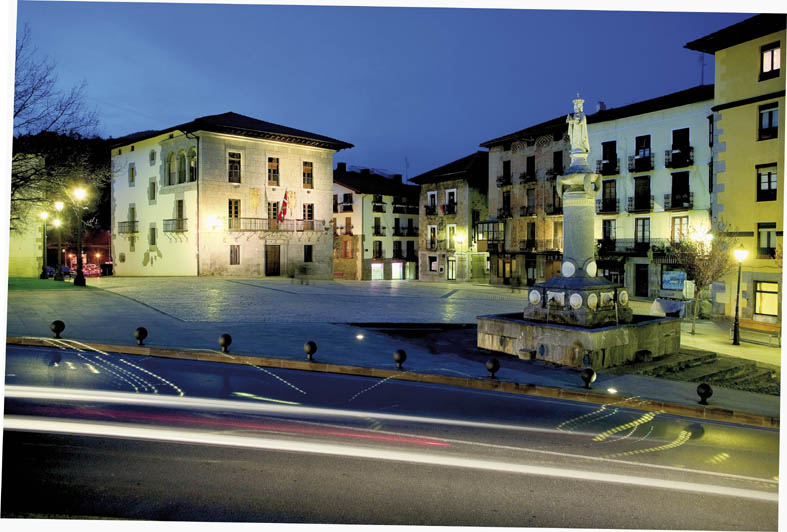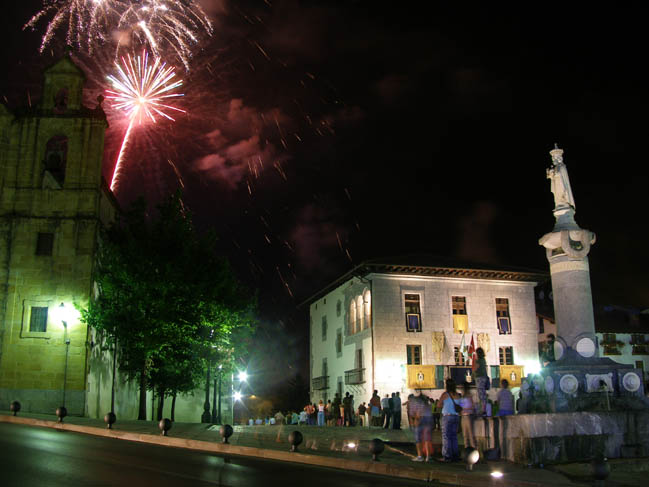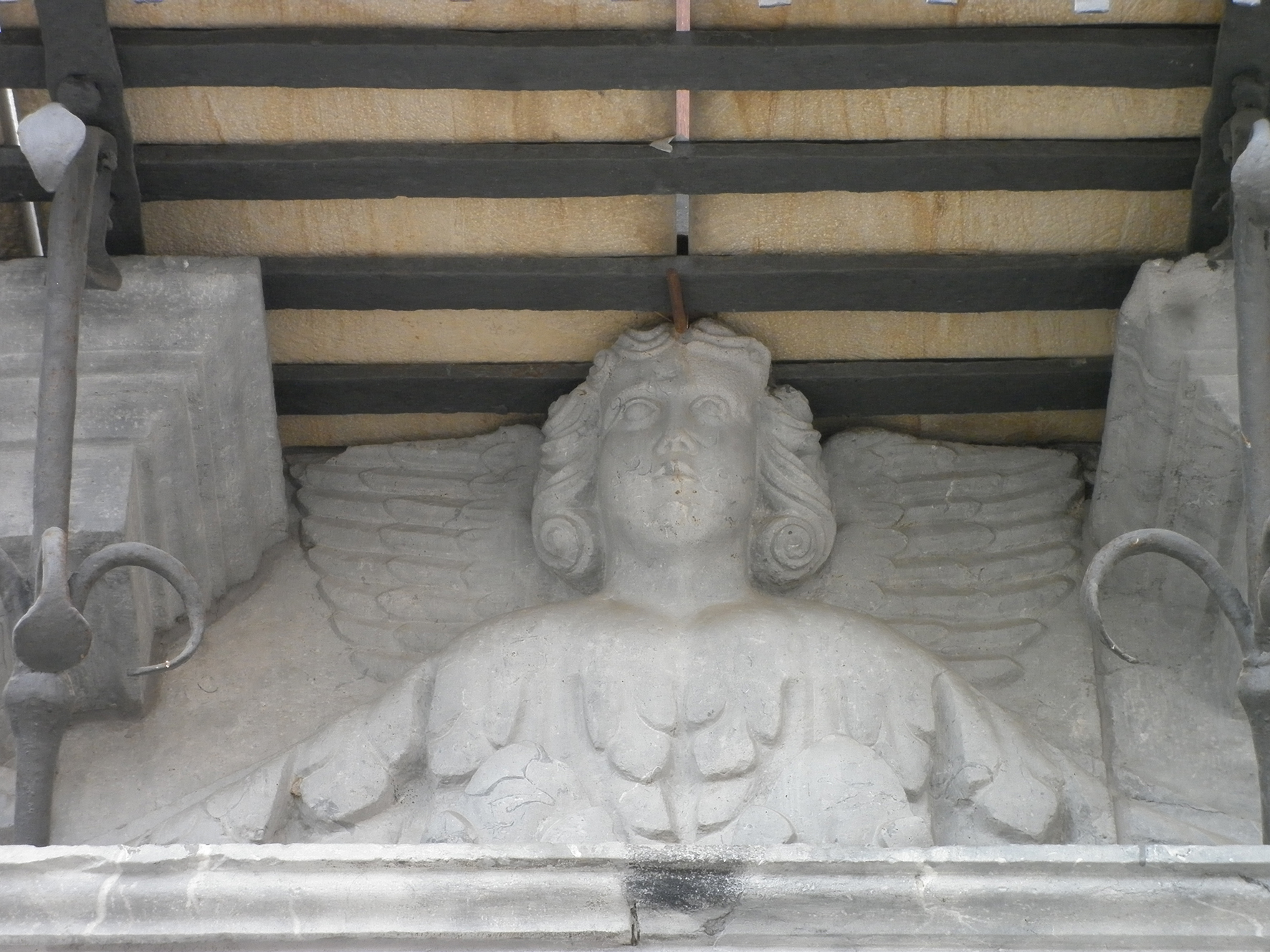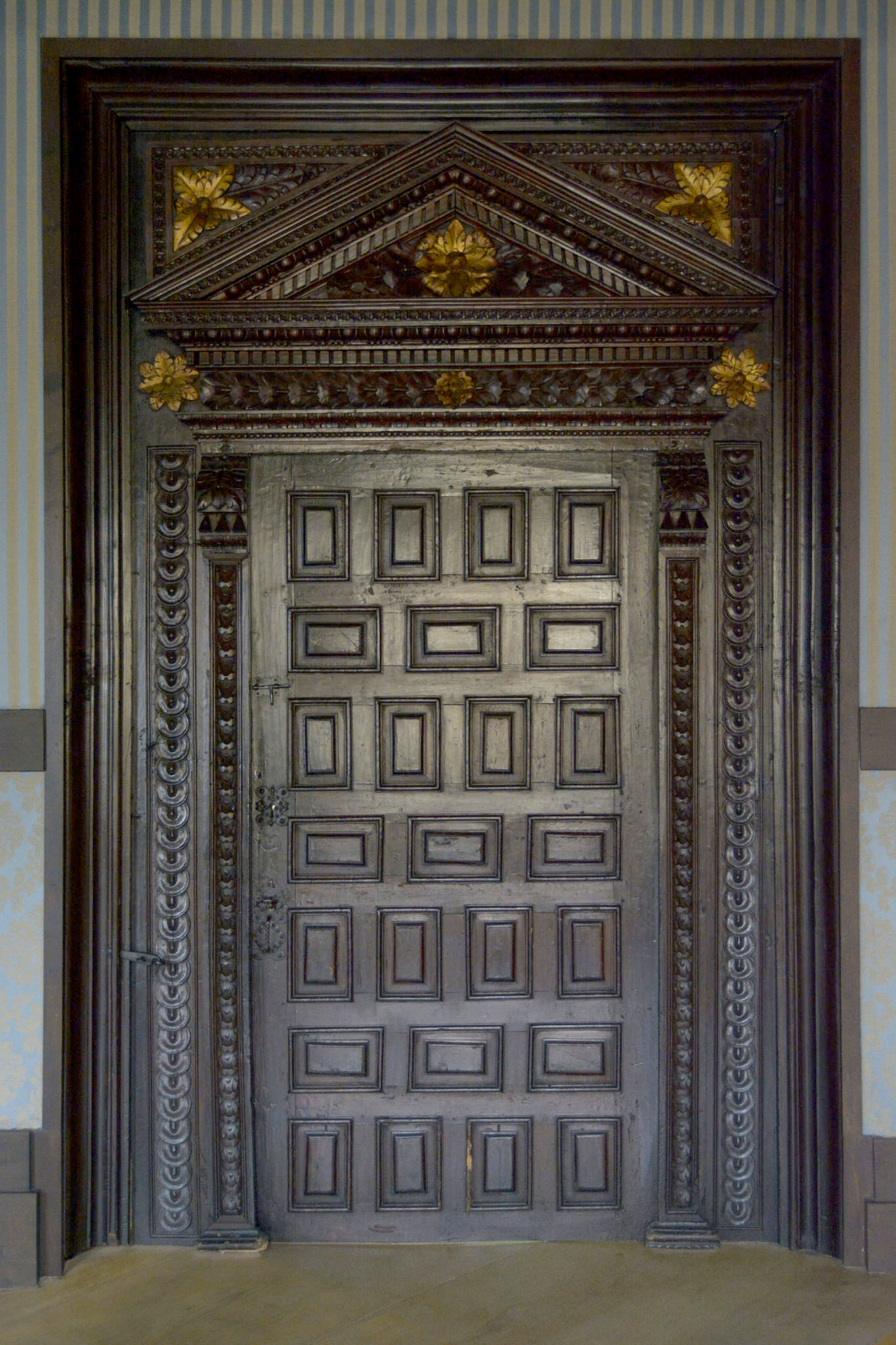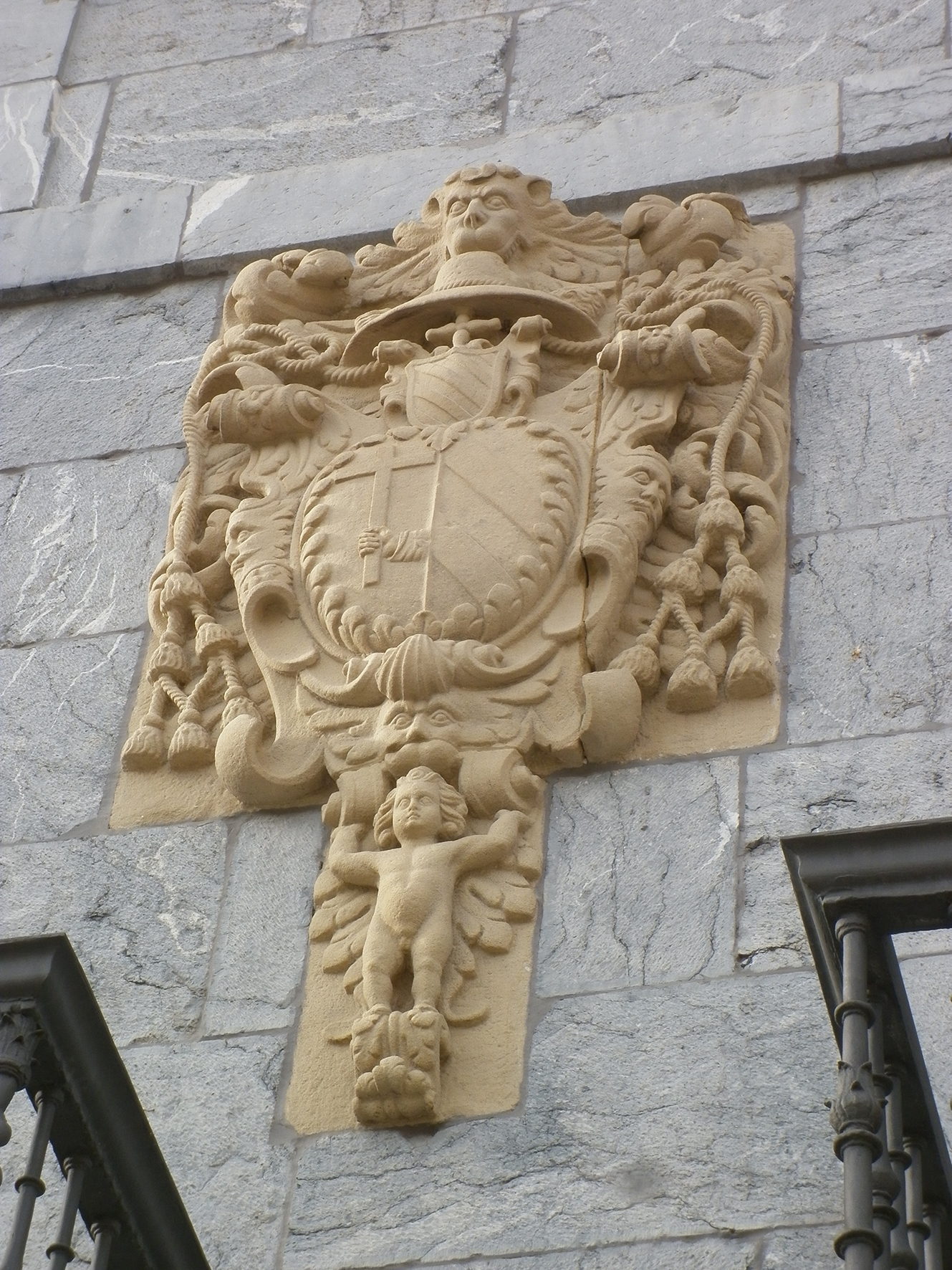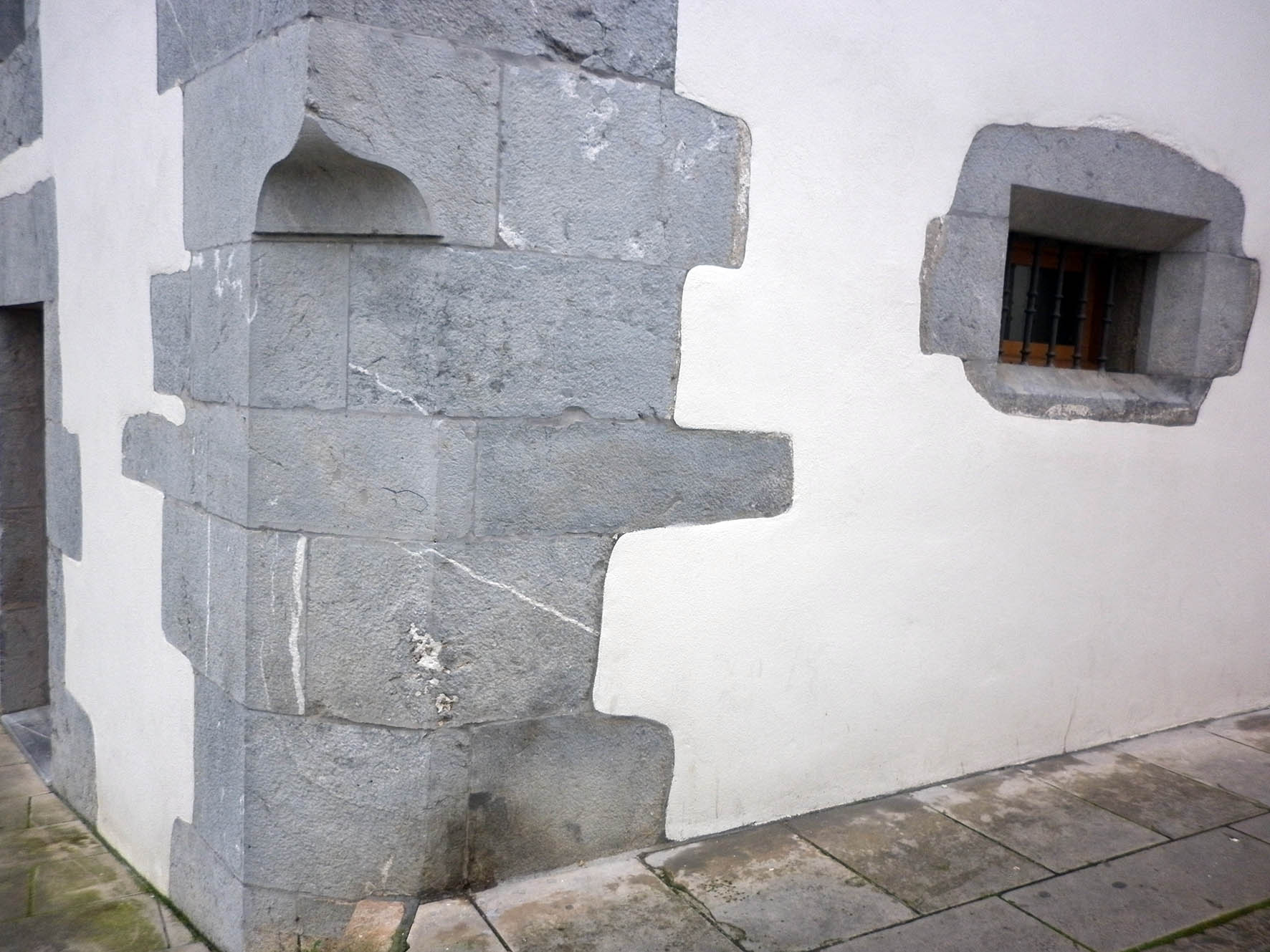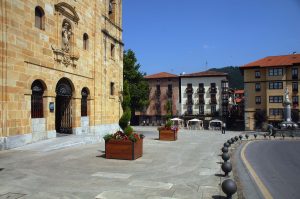
Casa Kareaga
Orients its main facade to Goikoportala. A baroque building (formerly a tower house) topped with wide eaves. On the first floor, there is the Barroeta coat of arms – somewhat deteriorated – comprising a lion, the cross of Saint Andrew with an eight-pointed star, a tree with an eagle devouring a piglet and three poplar leaves. In the center of the shield there is a crown and on the border the following legend: Justitia et Charitas Dilecti principis arces (justice and charity are strengths of the beloved prince).

The Painted House
The Painted House of Erdikokalea nº 15 also faces one of its facades to Goikoportala. The ground floor is made of ashlar masonry and the upper floors with balconies are decorated with geometric shapes, today somewhat deteriorated. Between this house and No. 2 of Goikoportala, there is an iroko wood door that closes the gully – a space for separating buildings – between the two houses. With the name Barrurantz begira (Ekozain), it was created by Henrike Arriaga following the initiative of the Hemen Be Bai de Markina-Xemein merchants association; initiative that contemplated the closure of the gullies through a look that would enhance them. Once the proposal was accepted by the Markina-Xemein City Council, in 2007 the collection of doors that we will mention in our tour was inaugurated.
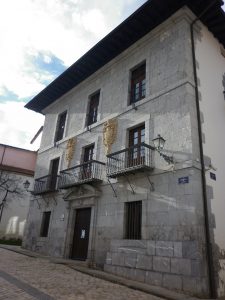
Solartekua Palace
Located in Goikoportala nº 3, the baroque palace of Mugartegui, also known by the name of Solartekua, has housed the Markina-Xemein town hall since April 2004. It is one of the most relevant urban palaces in the municipality. It was built by the Gipuzkoan architect Lucas Longa following the commission that the knight from Calatrava, Juan José Fernández de Mugartegui y Mañozca, made him in 1666. It is composed of the ground floor, two floors and an attic. The main facade, made of limestone arranged in ashlar masonry, shows us the access on the ground floor topped by a split pediment that houses a bust; on the first floor —noble floor—, in sandstone, the family shields —Mugartegui-Laca shield on the left and Mañozca on the right — and three individual balconies with good iron forging, keeping symmetry with the second floor. The building is finished off with a thick cornice that precedes an eave decorated with carved wooden corbels and a hipped roof.
In the rear part was the garden which today is a public parking lot. As for the side facades, the one that faces towards the Carmen church stands out with a loggia or sunbathing area in Italian-style semicircular arches. The other facade had attached a house —Etxe Txiki— for domestic service. This house has disappeared making the palace a free-standing building as it was in its conception.
Inside, all the carpentry work draws attention: staircase, coffered ceilings and decorative features, among which a wood carving that reproduces a snake woman stands out on the ground floor.
Goiko Portala 1
48270 Markina-Xemein, Bizkaia

